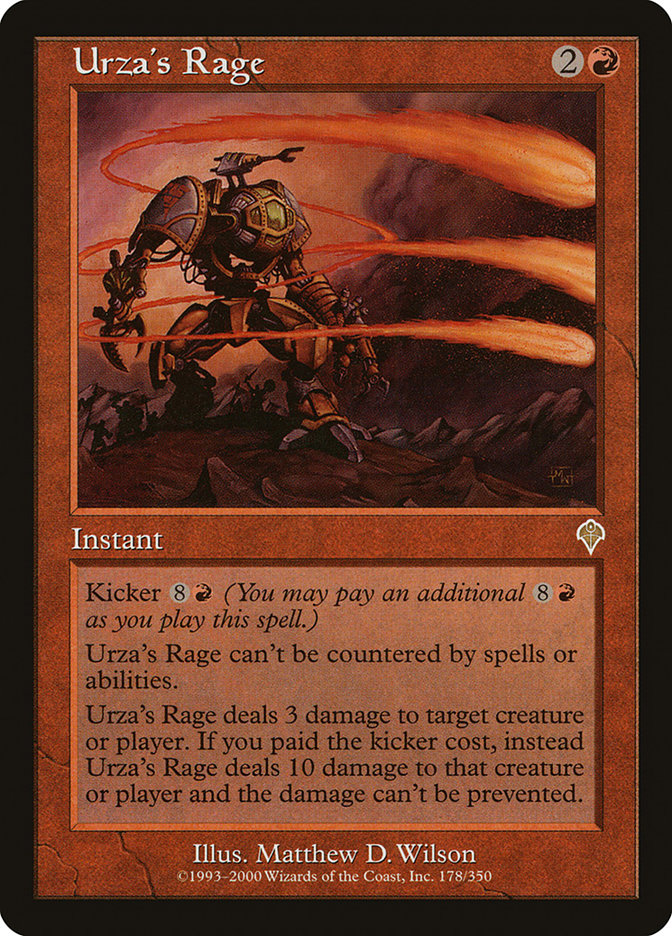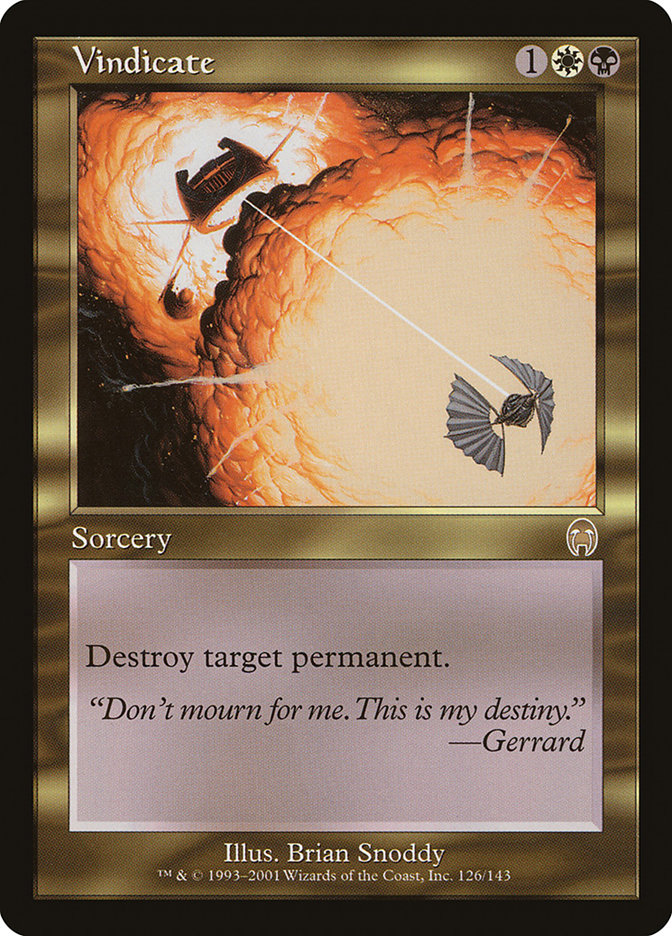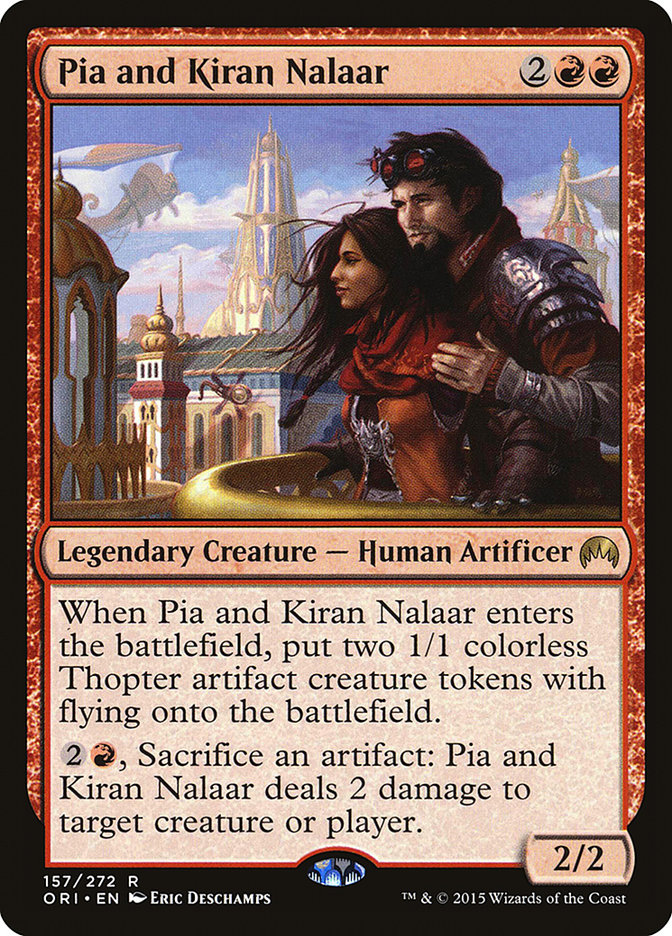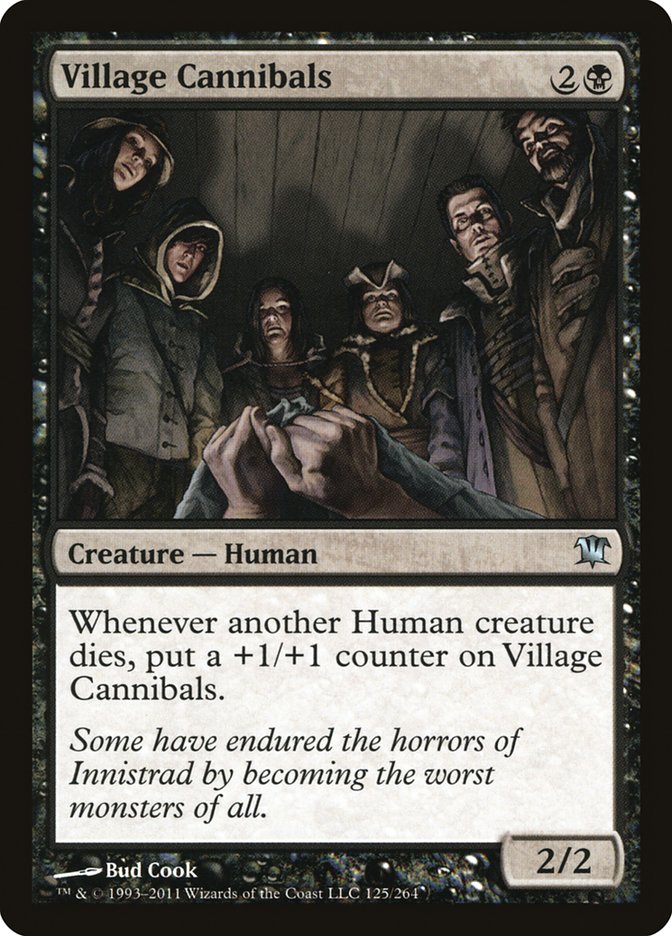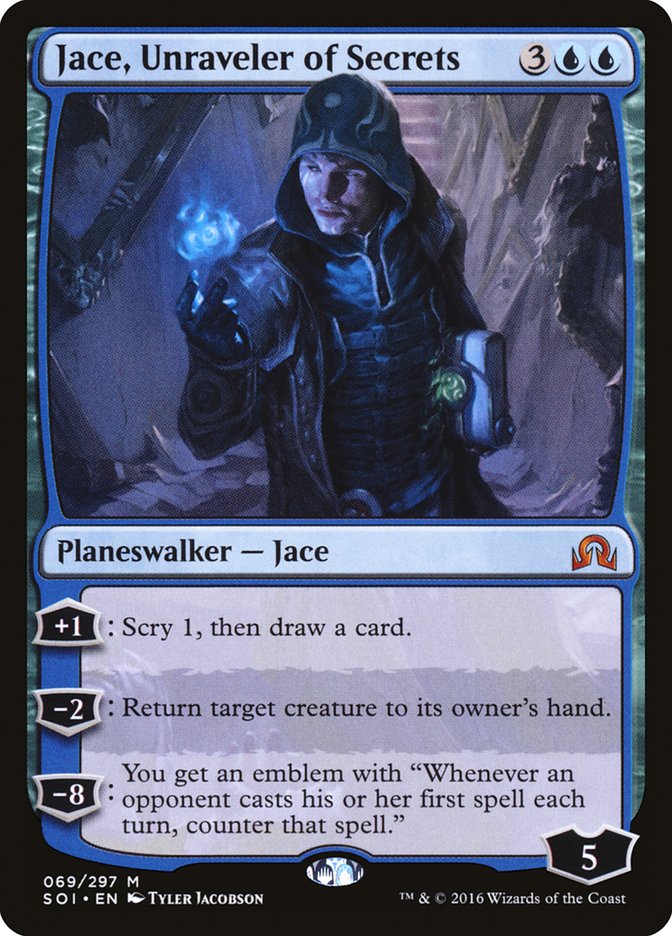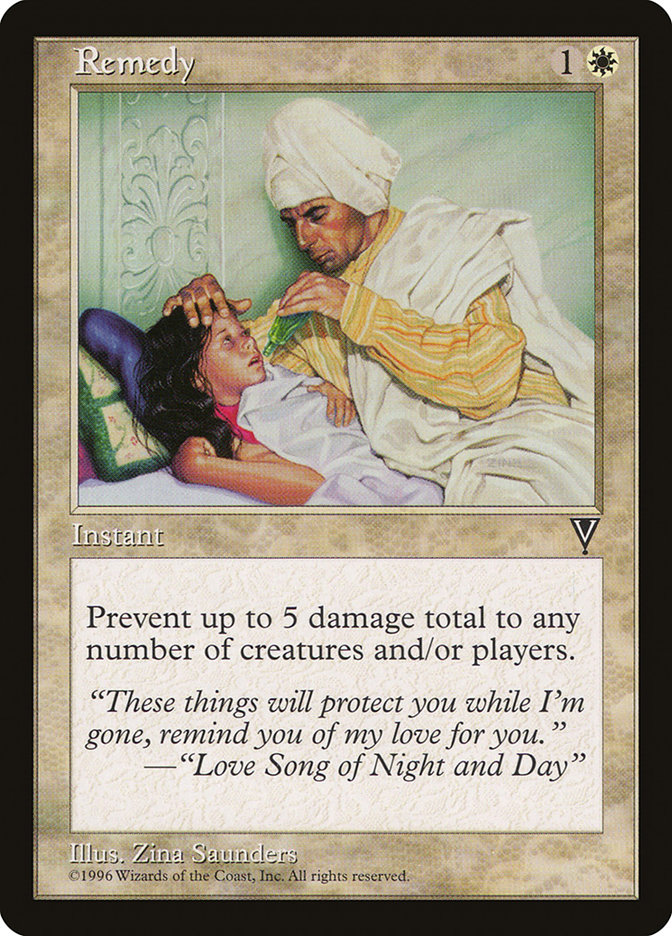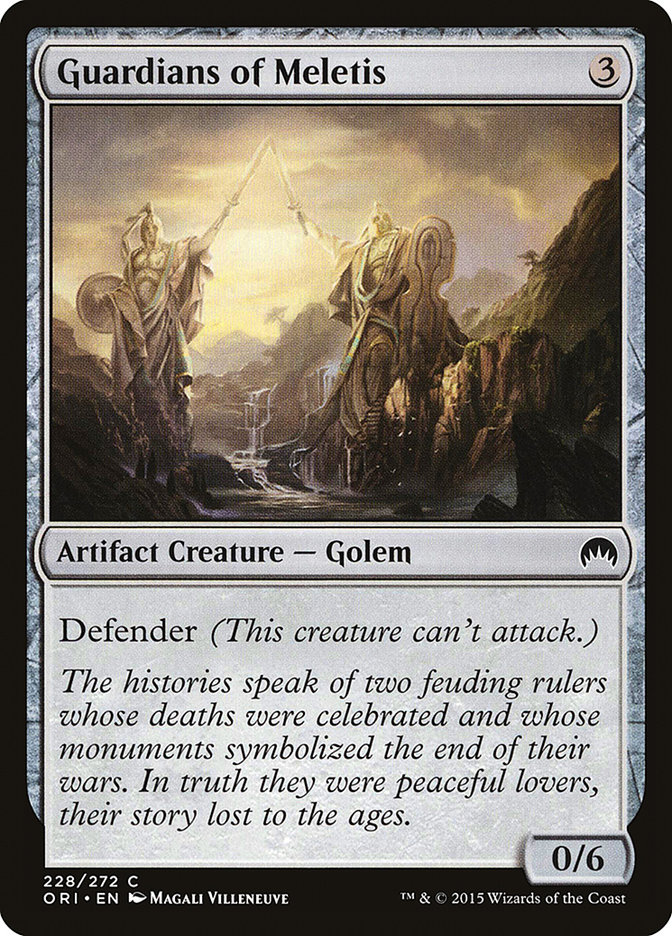Most of us aren’t fans of just one genre. Maybe fantasy holds your main allegiance in books to read, as it does mine, but it probably doesn’t monopolize your interest. On my recent vacation to the Detroit area, I visited John K. King Used & Rare Books and racked up a $70+ bill. What did I buy? A bunch of world literature (And Quiet Flows the Don, Light and Darknessand The Quiet American, to name just three) and some U.S. classics. Despite my love for fantasy, though, I only bought one book in that neighborhood (Philip K. Dick’s The Three Stigmata of Palmer Eldritch) and no fantasy at all. Heck, I bought more poetry (T.S. Eliot and Wilfred Owen) than sci-fi, even!
What can I say? Sometimes I like to scratch another literary itch.
So do the creators of Magic: The Gathering’s story, past and present. And while others may speak of limits on Magic’s cross-genre ranging — Mark Rosewater has called Mirrodin “as science fiction-y as we let Magic’s fantasy get” — as long as there’s magic, Magic could make almost any genre work.
As Magic advances toward its steampunk-with-a-difference future when Kaladesh is released this autumn, I’m taking a look back at some of the genres Magic has mixed with fantasy.
The Expectations of Fantasy
So what makes fantasy, fantasy? In one word, magic (with a lowercase “m”). Some environments have more magic than others; Little, Big has less overt magic than The Lord of the Rings, yet in both cases, removing the magic from the story would make the whole thing collapse.
As with any genre, one may quibble about corner-cases. Gene Wolfe, one of my all-time favorite authors, once infamously called magic realism “fantasy written by those who speak Spanish.” But there’s a difference in attitude; a low fantasy work would see magic happen in the real world and think “Wait a minute!”, while a magic realist work would see the same thing and take the attitude of “Meh.” There’s also the possibility that Mr. Wolfe, his protestations notwithstanding, is secretly not a fantasy writer at all but a magic realist writing in English. But I digress.
There’s a self-consciousness and insistence to fantasy, the impossible happening and then being announced with all the subtlety of a cheerleader. If science fiction defines itself as “what might be” and alternate history defines itself as “what might have been,” fantasy is “what never could be” with the italics for emphasis.
But there are plenty of stories to be told within that umbrella of “what never could be.” Let’s take a look at a few.
Science Fiction
I actually disagree with Mark Rosewater on Mirrodin being the most sci-fi Magic’s fantasy gets. The Weatherlight Saga gets pretty darn sci-fi at times.
Particularly at the end. I mean, Urza’s Rage? That’s a mecha. Oh, sure, it’s slinging fireballs, but it’s a giant walking machine. And Vindicate? Technically it shows the Skyship Weatherlight blowing something up, but we’re still talking about a flying ship with the magical equivalent of laser weapons making things go boom.
And even though Magic doesn’t get down with rocket ships (though it’s seemingly okay with a Rocket Launcher), the game and its characters can have a lot in common with the old scientific romances that were a precursor to modern sci-fi. What is an artificer but an inventor of the sort who created H.G. Wells’s The Time Machine? From Urza and his creation of Karn, Silver Golem to Jhoira of the Ghitu and Venser, Shaper Savant, Magic’s characters are on the cutting edge of technology, whatever it means for their worlds.
Kaladesh is in its own way a continuation of the scientific romance theme. Pia and Kiran Nalaar are artificers, and they invented the “steam pack” meant to keep their daughter Chandra’s fire magic in check. I’m interested to see the extent to which Kaladesh is forward-looking (the scientific romance) or backward-looking (the Victorian Revival steampunk). I suspect it will be more of the former, between the slogan “Invent Your Tomorrow” and their half-dozen creative consultants.
And for the inevitable jackass who must show up braying about what inventions came out of India, here you go and get lost.
Horror
Horror is a third genre often “lumped in” with science fiction and fantasy on bookstore shelves. Much horror has its roots in the supernatural, and it’s not much of a stretch to go from ghouls and ghosts to the realm of Faerie. Fantasy-horror is one of the most common hybrids in fiction, with dark fantasy having a long history.
Magic has showcased several different versions or visions of horror. Phyrexia and New Phyrexia give viscerally loathsome examples of body horror (and no, I didn’t put Magic on that Wikipedia page). Zendikar block took a hard swerve from the “Adventure World” of the first two sets to unleash the distinctly Lovecraftian Eldrazi on the Multiverse, a theme that dominated the subsequent Battle for Zendikar block (albeit with an uncommonly upbeat and successful ending).
Innistrad and its follow-up Shadows over Innistrad offer yet another take on horror: the stuff of Hollywood movies like Frankenstein (itself originally a novel that presaged science fiction while being a classic example of Gothic horror). Werewolves and Vampires and Spirits are only some of the horrors (did I mention the Horrors?) besieging the Humans of the plane…who sometimes are more horrible than all the rest.
As I write this, I don’t know what the resumption of the Shadows over Innistrad storyline will bring. Maybe, as some have speculated, there will be a mixing of the horror genres as something Phyrexian or Eldrazi lands on the plane of Laboratory Maniac and Brain in a Jar. If so, I’m interested to see how well Magic would unite those disparate strains.
Mystery
While I’ve already mentioned how the Innistrad setting mixes fantasy and horror, in Shadows over Innistrad a third genre appears: the mystery. Between Jace, Unraveler of Secrets and the many Clue tokens dotting the plane, the mystery tropes are as clear as a tiny eye under a Magnifying Glass.
Oddly enough, the main story of Shadows over Innistrad, despite featuring an installment called “The Mystery of Markov Manor,” is more a “search for truth” than a “search for a culprit,” though Nahiri, the Harbinger is clearly a solution to the mystery of “who’s behind it all.” A more traditional mystery is the Uncharted Realms installment “Under the Silver Moon,” which arguably has more twists and turns than Jace’s entire stay on Innistrad so far.
While mysteries haven’t featured too often in past Magic storylines, the few examples are memorable. The plane of Ravnica, with its single city or ecumenopolis covering all, has been particularly fertile ground for mysteries. The novel Ravnica by Cory J. Herndon is Magic meets hardboiled detective fiction, with a century-old Agrus Kos, Wojek Veteran as the cynical investigator, crystallized healing magic called “teardrops” replacing alcohol as the obligatory addiction, and a mystery that starts with the assassination of a minor religious leader and grows into a planewide constitutional crisis.
Trivia: artist Donato Giancola calls his illustration of Agrus Kos “Othello.”
Magic has mixed in elements of science fiction, horror, and mystery. There’s a genre it hasn’t touched, though, and I’m curious to see how it’d go…
Romance
I want to see what a Magic: The Gathering romance novel would look like.
Yeah, you heard me.
I’ve read dozens of Harlequin paperbacks. This may come as a bit of a surprise to you, and possibly to my mother whose books they were, but I figured I ought to know what others were reading, and I saw those romance novels in places where I didn’t see any other books, like drugstores and supermarkets, so I figured they had to be important.
I figured things out pretty early, of course. That question raised on the back cover, of whether the woman and man would be able to work things out and be together? Of course they would. Every time. It was just a matter of getting from point A to point B, and some authors were better at it than others.
For the most part, the academic elite has either trashed romance novels or found them beneath notice. The capitalist in me, though, takes note of the sales numbers. Romance novels are big business — more than $1 billion in revenue in 2013.
Paranormal romance — a hybrid genre that combines fantasy or related elements with the romance, as in the Twilight series (Human / Vampire / Werewolf love triangle) or Assassin’s Gambit (magic-wielding assassin and her royal target fall for each other) — is a small slice of the romance pie. But even one percent of $1 billion is $10 million, and I’d be happy to chase that chunk of change.
Time was that the idea of a Magic romance novel would’ve been laughed out of the room. I was around for the infamous posting of a Magic style guide in 2005 that included the words, verbatim, “Remember, your audience is BOYS 14 and up” — not to mention words like “magepunk” and “active, aggressive, cool, wicked, edgy.”
But Magic’s matured since then, or at least it’s tried to.
Romance as opposed to sex is still not as common as I like, and the romance novel formula with its happy eternal union of the lovers is nearly nonexistent; if someone has an example of the happily-ever-after in Magic aside from Orim, Samite Healer (from Dominaria) and Cho-Manno, Revolutionary (from Mercadia — they met on Mercadia after Orim traveled there on the Skyship Weatherlight), I’d like to see it in the comments!
But just imagine the possibilities: a planeswalker travels to Ravnica or Innistrad or Kaladesh looking for an artifact, a scroll containing a powerful spell, or an old foe — and instead meets the love of their life. A reason to keep coming back, to protect this new place.
A reason for a few, like Elspeth Tirel when she discovered Bant, to never want to leave.
A Magic paranormal romance novel flies in the face of most of Magic’s past. It’s a definitive ending for two or more characters, aimed at an audience made up largely of women, with grand battles playing second fiddle to feelings and the slow burn of love.
That just means it’s an opportunity to tell new stories, and to a lucrative market no less. I’d love to buy a novel from Wizards telling the story of a Knight of the Reliquary from Bant traveling to another plane and meeting the artificer of her dreams.
Even if they call it One Knight in Kaladesh.
Especially if they do.


